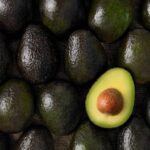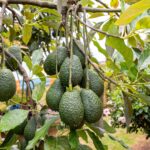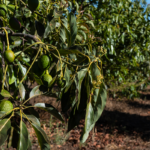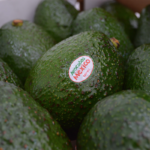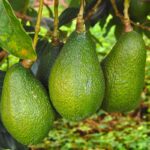Scientists search for chemical to protect avocados from pest

UC Riverside scientists are on the hunt for a chemical called pheromone that disrupts “evil” weevils’ mating and could prevent them from destroying California’s supply of avocados.
Avocado weevils, small beetles with long snouts, drill through fruit to lay eggs. The weevil grubs or larvae bore into avocado seeds to feed, rendering the fruits inedible.
“They’re extremely hard to control because they spend most of their time deep inside the fruit, where they’re very well protected from insecticides and natural enemies,” said UCR entomologist Mark Hoddle.
To combat avocado weevils in Mexico, an area where they are native, and to prevent them from being accidentally introduced into California, Hoddle is working with Jocelyn Millar, a UCR insect pheromone expert. They are leading an effort to find the weevil’s pheromone, with the goal of using it to monitor these pests and prevent them from mating in avocado orchards.
Pheromones are chemicals produced and released into the environment by an insect that can be “smelled” by others of its species, and affect their behavior.
“We could flood avocado orchards with so much pheromone that males and females can’t find each other, and therefore can’t reproduce,” Hoddle said. “This would reduce damage to fruit and enable growers to use less insecticides.”
An initial phase of the project sent Hoddle to a base of operations three hours south of Mexico City, an area with large weevil populations. Using a special permit issued by the USDA, Hoddle brought weevils back to UCR’s Insectary and Quarantine facility.
Hoddle and Sean Halloran, a UCR entomology researcher, captured the chemicals that avocado weevils release into the air. Possible pheromone compound formulas were identified from these crude extracts and are now being synthesized in Millar’s laboratory.
“Weevil pheromones have complicated structures. When they’re made in a lab, they can have left- or right-handed forms,” said Hoddle. Initially, Millar’s group made a mixture of both forms to see if the blend would work as an attractant, as it is far cheaper to make the blend than the individual left- or right-handed forms.
Field work in Mexico with the pheromone cocktail by Hoddle, his wife Christina Hoddle, an associate specialist in entomology, and Mexican collaborators did not get a big response from the weevils, suggesting that one of the forms in the blend could be antagonizing the response to the other.
As the next step, the researchers plan to synthesize the individual forms of the chemicals and test the insects’ response to each in Mexican avocado orchards.

















